Liming Wang
Can Diffusion Models Disentangle? A Theoretical Perspective
Mar 31, 2025Abstract:This paper presents a novel theoretical framework for understanding how diffusion models can learn disentangled representations. Within this framework, we establish identifiability conditions for general disentangled latent variable models, analyze training dynamics, and derive sample complexity bounds for disentangled latent subspace models. To validate our theory, we conduct disentanglement experiments across diverse tasks and modalities, including subspace recovery in latent subspace Gaussian mixture models, image colorization, image denoising, and voice conversion for speech classification. Additionally, our experiments show that training strategies inspired by our theory, such as style guidance regularization, consistently enhance disentanglement performance.
Contextual Bandit with Herding Effects: Algorithms and Recommendation Applications
Aug 26, 2024Abstract:Contextual bandits serve as a fundamental algorithmic framework for optimizing recommendation decisions online. Though extensive attention has been paid to tailoring contextual bandits for recommendation applications, the "herding effects" in user feedback have been ignored. These herding effects bias user feedback toward historical ratings, breaking down the assumption of unbiased feedback inherent in contextual bandits. This paper develops a novel variant of the contextual bandit that is tailored to address the feedback bias caused by the herding effects. A user feedback model is formulated to capture this feedback bias. We design the TS-Conf (Thompson Sampling under Conformity) algorithm, which employs posterior sampling to balance the exploration and exploitation tradeoff. We prove an upper bound for the regret of the algorithm, revealing the impact of herding effects on learning speed. Extensive experiments on datasets demonstrate that TS-Conf outperforms four benchmark algorithms. Analysis reveals that TS-Conf effectively mitigates the negative impact of herding effects, resulting in faster learning and improved recommendation accuracy.
Automatic Prediction of Amyotrophic Lateral Sclerosis Progression using Longitudinal Speech Transformer
Jun 26, 2024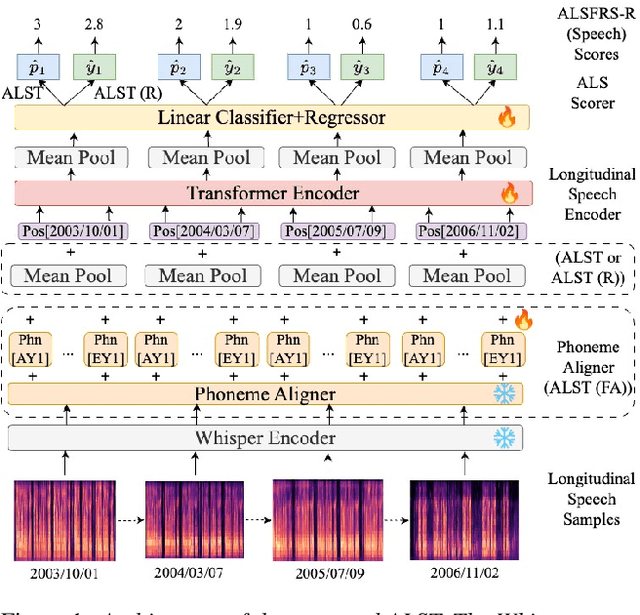
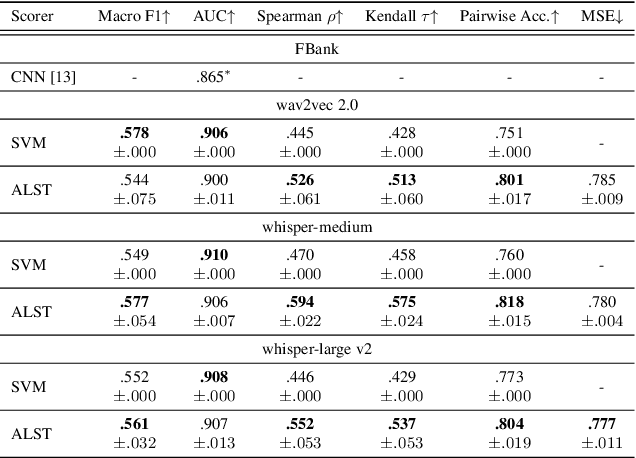

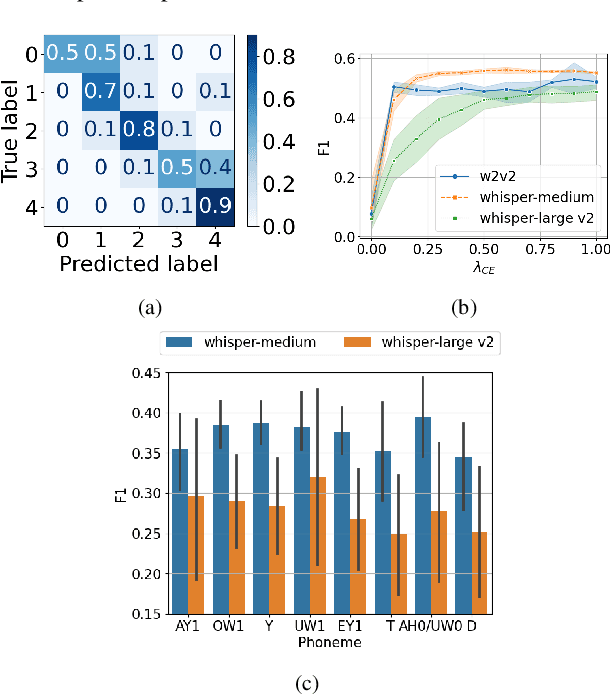
Abstract:Automatic prediction of amyotrophic lateral sclerosis (ALS) disease progression provides a more efficient and objective alternative than manual approaches. We propose ALS longitudinal speech transformer (ALST), a neural network-based automatic predictor of ALS disease progression from longitudinal speech recordings of ALS patients. By taking advantage of high-quality pretrained speech features and longitudinal information in the recordings, our best model achieves 91.0\% AUC, improving upon the previous best model by 5.6\% relative on the ALS TDI dataset. Careful analysis reveals that ALST is capable of fine-grained and interpretable predictions of ALS progression, especially for distinguishing between rarer and more severe cases. Code is publicly available.
NTIRE 2024 Challenge on Night Photography Rendering
Jun 18, 2024



Abstract:This paper presents a review of the NTIRE 2024 challenge on night photography rendering. The goal of the challenge was to find solutions that process raw camera images taken in nighttime conditions, and thereby produce a photo-quality output images in the standard RGB (sRGB) space. Unlike the previous year's competition, the challenge images were collected with a mobile phone and the speed of algorithms was also measured alongside the quality of their output. To evaluate the results, a sufficient number of viewers were asked to assess the visual quality of the proposed solutions, considering the subjective nature of the task. There were 2 nominations: quality and efficiency. Top 5 solutions in terms of output quality were sorted by evaluation time (see Fig. 1). The top ranking participants' solutions effectively represent the state-of-the-art in nighttime photography rendering. More results can be found at https://nightimaging.org.
Towards Unsupervised Speech Recognition Without Pronunciation Models
Jun 12, 2024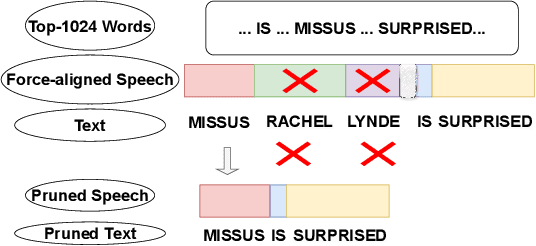
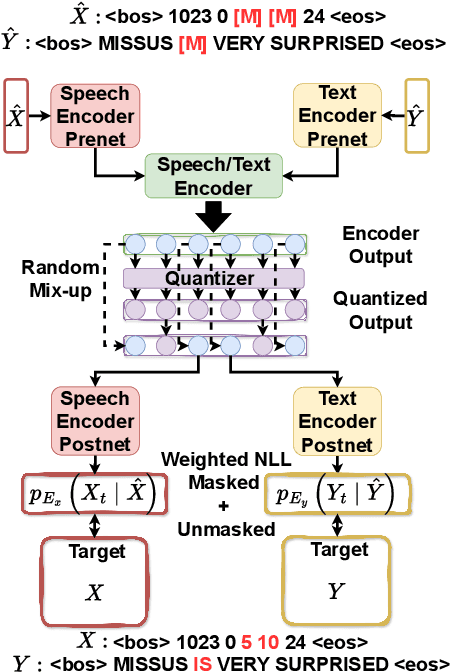
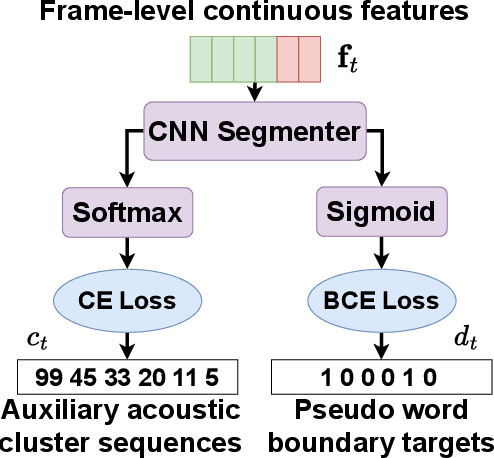
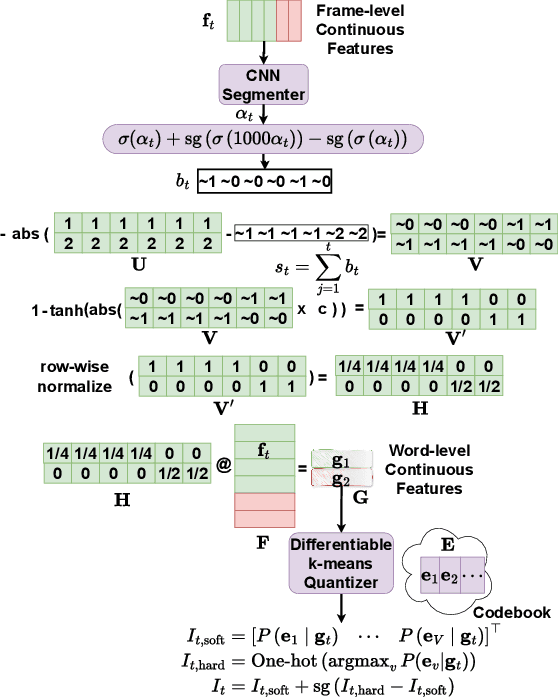
Abstract:Recent advancements in supervised automatic speech recognition (ASR) have achieved remarkable performance, largely due to the growing availability of large transcribed speech corpora. However, most languages lack sufficient paired speech and text data to effectively train these systems. In this article, we tackle the challenge of developing ASR systems without paired speech and text corpora by proposing the removal of reliance on a phoneme lexicon. We explore a new research direction: word-level unsupervised ASR. Using a curated speech corpus containing only high-frequency English words, our system achieves a word error rate of nearly 20% without parallel transcripts or oracle word boundaries. Furthermore, we experimentally demonstrate that an unsupervised speech recognizer can emerge from joint speech-to-speech and text-to-text masked token-infilling. This innovative model surpasses the performance of previous unsupervised ASR models trained with direct distribution matching.
Unsupervised Speech Recognition with N-Skipgram and Positional Unigram Matching
Oct 03, 2023Abstract:Training unsupervised speech recognition systems presents challenges due to GAN-associated instability, misalignment between speech and text, and significant memory demands. To tackle these challenges, we introduce a novel ASR system, ESPUM. This system harnesses the power of lower-order N-skipgrams (up to N=3) combined with positional unigram statistics gathered from a small batch of samples. Evaluated on the TIMIT benchmark, our model showcases competitive performance in ASR and phoneme segmentation tasks. Access our publicly available code at https://github.com/lwang114/GraphUnsupASR.
Prototypes-oriented Transductive Few-shot Learning with Conditional Transport
Aug 06, 2023Abstract:Transductive Few-Shot Learning (TFSL) has recently attracted increasing attention since it typically outperforms its inductive peer by leveraging statistics of query samples. However, previous TFSL methods usually encode uniform prior that all the classes within query samples are equally likely, which is biased in imbalanced TFSL and causes severe performance degradation. Given this pivotal issue, in this work, we propose a novel Conditional Transport (CT) based imbalanced TFSL model called {\textbf P}rototypes-oriented {\textbf U}nbiased {\textbf T}ransfer {\textbf M}odel (PUTM) to fully exploit unbiased statistics of imbalanced query samples, which employs forward and backward navigators as transport matrices to balance the prior of query samples per class between uniform and adaptive data-driven distributions. For efficiently transferring statistics learned by CT, we further derive a closed form solution to refine prototypes based on MAP given the learned navigators. The above two steps of discovering and transferring unbiased statistics follow an iterative manner, formulating our EM-based solver. Experimental results on four standard benchmarks including miniImageNet, tieredImageNet, CUB, and CIFAR-FS demonstrate superiority of our model in class-imbalanced generalization.
A Theory of Unsupervised Speech Recognition
Jun 09, 2023Abstract:Unsupervised speech recognition (ASR-U) is the problem of learning automatic speech recognition (ASR) systems from unpaired speech-only and text-only corpora. While various algorithms exist to solve this problem, a theoretical framework is missing from studying their properties and addressing such issues as sensitivity to hyperparameters and training instability. In this paper, we proposed a general theoretical framework to study the properties of ASR-U systems based on random matrix theory and the theory of neural tangent kernels. Such a framework allows us to prove various learnability conditions and sample complexity bounds of ASR-U. Extensive ASR-U experiments on synthetic languages with three classes of transition graphs provide strong empirical evidence for our theory (code available at cactuswiththoughts/UnsupASRTheory.git).
Interactive Log Parsing via Light-weight User Feedbacks
Jan 28, 2023Abstract:Template mining is one of the foundational tasks to support log analysis, which supports the diagnosis and troubleshooting of large scale Web applications. This paper develops a human-in-the-loop template mining framework to support interactive log analysis, which is highly desirable in real-world diagnosis or troubleshooting of Web applications but yet previous template mining algorithms fails to support it. We formulate three types of light-weight user feedbacks and based on them we design three atomic human-in-the-loop template mining algorithms. We derive mild conditions under which the outputs of our proposed algorithms are provably correct. We also derive upper bounds on the computational complexity and query complexity of each algorithm. We demonstrate the versatility of our proposed algorithms by combining them to improve the template mining accuracy of five representative algorithms over sixteen widely used benchmark datasets.
Adaptive Perception Transformer for Temporal Action Localization
Aug 25, 2022
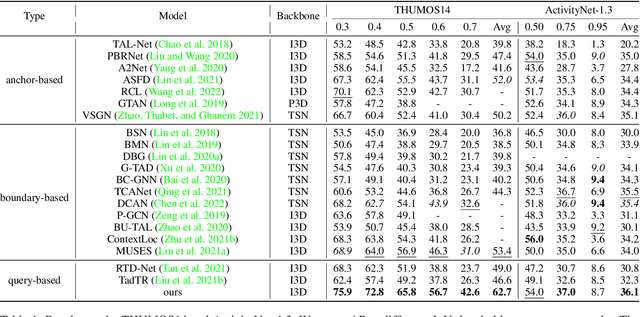


Abstract:Temporal action localization aims to predict the boundary and category of each action instance in untrimmed long videos. Most of previous methods based on anchors or proposals neglect the global-local context interaction in entire video sequences. Besides, their multi-stage designs cannot generate action boundaries and categories straightforwardly. To address the above issues, this paper proposes a novel end-to-end model, called adaptive perception transformer (AdaPerFormer for short). Specifically, AdaPerFormer explores a dual-branch multi-head self-attention mechanism. One branch takes care of the global perception attention, which can model entire video sequences and aggregate global relevant contexts. While the other branch concentrates on the local convolutional shift to aggregate intra-frame and inter-frame information through our bidirectional shift operation. The end-to-end nature produces the boundaries and categories of video actions without extra steps. Extensive experiments together with ablation studies are provided to reveal the effectiveness of our design. Our method achieves a state-of-the-art accuracy on the THUMOS14 dataset (65.8\% in terms of mAP@0.5, 42.6\% mAP@0.7, and 62.7\% mAP@Avg), and obtains competitive performance on the ActivityNet-1.3 dataset with an average mAP of 36.1\%. The code and models are available at https://github.com/SouperO/AdaPerFormer.
 Add to Chrome
Add to Chrome Add to Firefox
Add to Firefox Add to Edge
Add to Edge